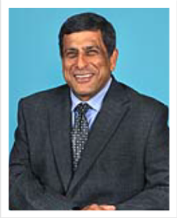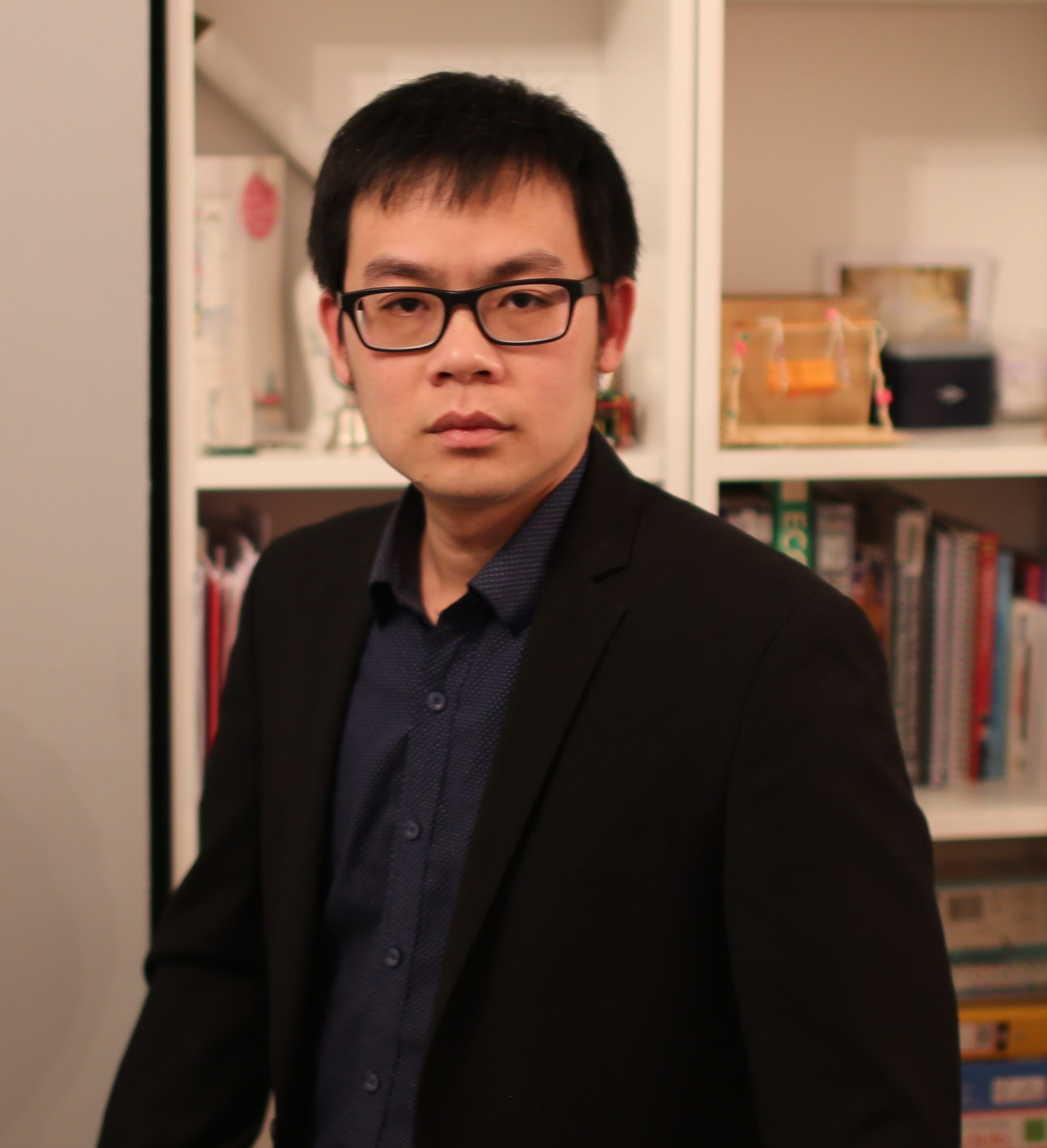IEEE ICCE 2020
Tutorials
Stochastic Resonance: Tuning in to Noise
by Adi Bulsara
Naval Information Warfare Center, San Diego
Abstract
Two sweeping generalizations can be made about most natural systems: They are intrinsically nonlinear and they operate in noisy environments. Examples abound, ranging from weather systems, to oscillating chemical reactions, to the movements of an eel. The most complex example is arguably the human central nervous system, flooded as it is with the "noise" of modern life. For any such system subjected to a periodic modulating signal so weak as to be normally undetectable, one of a class of noise-induced cooperative phenomena can often be set up, leading to a “resonance” between the weak deterministic signal and the stochastic noise. Such a resonance, in effect, matches characteristic deterministic and stochastic time scales, making the signal visible.
“Stochastic Resonance” (SR) encapsulates the non-intuitive notion that moderate (and, ideally, carefully controlled) levels of noise in a nonlinear dynamical system can actually enhance the information throughput — and so improve the sensing and processing of otherwise undetectable signals. Originally postulated as a mechanism to explain how ice ages occur, the effect has since been demonstrated in a plethora of laboratory experiments, and has also been proposed to be responsible for the way in which biological sensing mechanisms function to take advantage of inherent background noise.
First introduced in the mid-80s, the effect has been extensively investigated for periodic signals in broadband noise; however it has been, also, shown to work for more complex (aperiodic) signals. The hallmark of SR is a plot of the output SNR (measured at the fundamental of the applied frequency) vs. noise; this curve passes through a maximum at a critical value of noise, a value that can be calculated in terms of the system and signal parameters. For signal processing applications involving fixed noise, one may obtain the above-mentioned SNR enhancement by varying other system control parameters that are easier to adjust. It is important to state, at the outset, that SR cannot (at least for the simple case of a known signal in broadband noise) deliver an output SNR in excess of the input. It can, however, enhance the fidelity of a signal by reducing the noise background at the signal frequency, and it may enhance the detectability of signals in certain threshold-type detectors. For more complex signals, SR provides a valuable signal processing tool; research in this area is ongoing. It must be emphasized that SR occurs in nonlinear dynamic systems via a delicate interplay of noise, and signal, mediated by the nonlinearity; it cannot be generated in a linear system with separable dynamics.
The SNR response of a single nonlinear element can be enhanced by coupling it into the chain; this is now known as array-enhanced stochastic resonance. Further, the output SNR can be maximized by treating either the noise or the coupling as “design” parameters. The optimal noise variance scales as the number of elements in the array, N, and the optimal coupling strength scales as N2. The global maximum in the output SNR across the array corresponds to a noise-induced spatiotemporal synchronization of the array to the external signal frequency, with the location on the noise axis and magnitude of the SNR maximum depending,
critically, on system parameters such as the coupling. With optimal “tuning” (achieved by adjusting the coupling or noise strengths), the array behaves like a solid rod, switching between left and right stable states of each potential energy function every T/2 seconds, with T being the driving signal period. In this best of all possible conditions, the output SNR of any element in the array is at its maximum; with carefully selected system parameters, this output SNR can exceed that of an isolated element. An optimal coupling strength can be found for any given noise level if the noise is not too low. Conversely, for a given coupling, some noise level can be found that best "tunes" the system.
In 1997, the first international conference on SR and its applications, was held in San Diego. There were 67 speakers, all invited. The only criterion for speaking was a single published paper on the effect. Today, a simple google search yields thousands of hits. The applications of SR in Signal detection/conditioning, nonlinear devices (e.g. SQUIDs, nonlinear optical threshold systems), and in explaining assorted features of neural information processing, are numerous. Recently, work on SR in arrays, dating back to 1995 is being utilized to construct ultra-sensitive (usually biomimetic) sensor arrays, as well as investigating machine learning in the presence of noise.
This lecture presents Stochastic Resonance from first principles to array applications. We will touch on engineering applications e.g. threshold detection, and consider (very briefly) some neurophysiological/biomedical ramifications of the effect.
Biography (Adi Bulsara)
 |
Dr. Adi Bulsara is a Senior Scientist/Technologist serving as the Senior Research Scientist for Nonlinear Dynamics Naval Information Warfare Command (NIWC). Dr. Bulsara received his Ph.D. in physics in 1978 from the University of Texas at Austin. At Austin, he worked in the statistical mechanics group headed by Nobel Laureate, Ilya Prigogine. After earning his Ph.D., he was a Postdoctoral fellow at the University of California at San Diego. He began his career at NIWC in 1983. With a specialization in the physics of nonlinear dynamical systems in the presence of noise, he was one of the early proponents of the Stochastic Resonance (SR) phenomenon. In 1991, with collaborators Drs. Andre Longtin and Frank Moss, Dr. Bulsara was the first to propose SR as an underlying mechanism in the processing of information by sensory neurons in the presence of background noise. Their work led to a News and Views review in Nature entitled, “Towards the Brain's Computer Code?” by then-editor Sir John Maddox. Their remarkable predictions have since been validated in numerous biological preparations and psychological experiments involving perception and cognition. Following this work, Dr. Bulsara concentrated on the physics of noise-mediated cooperative phenomena, of which SR is just one example, in coupled arrays of nonlinear dynamic devices (e.g. neurons, superconducting quantum interference devices, and other nonlinear devices, including room temperature magnetometers). His workwas featured in the cover article of Physics Today in March 1996, “Tuning to the Noise.” Dr. Bulsara was elected a Fellow of the American Physical Society in 2004. He was cited for his work on Stochastic Resonance. He has developed collaborations involving the University of Catania and the University of Perugia (both in Italy), and Warwick University (UK). By invitation in 2005, Dr. Bulsara published a News and Views article in Nature titled, “No-Nuisance Noise.” Dr. Bulsara has 25 patents awarded, 3 patents pending award, and some 240 (peer-reviewed) publications in the physics and engineering literature.
|
Fundamentals of Cellular and Cell-Free Massive MIMO
by Hien Quoc Ngo
Queen’s University Belfast, UK
Abstract
With the dramatic growth of wireless devices and services/applications (such as real-time video calls, real-time 3D games, Internet of Things, and smart X), future wireless networks must satisfy the following main requirements: (1) manage at the same time many (millions or even billions) devices; (2) each needs a high throughput; (3) high energy efficiency; and (4) high-level security services. This can be achieved by the massive multiple-input and multiple-output (MIMO) technology where many served antennas coherently serve many users in the same time-frequency resource. Massive MIMO provides very high array gain and multiplexing gain, and hence, offers huge spectral and energy efficiency with simple linear processing. Depending on the system topologies, massive MIMO is divided into two main systems: cellular (collocated) massive MIMO and cell-free massive MIMO. Cellular massive MIMO is becoming mature and is one of the core technologies for 5G networks. The first version of 5G NR with Massive MIMO was standardized by 3GPP. More advanced technologies related to massive MIMO are developing for the future releases of 5G standards. By contrast, cell-free massive MIMO is a very new concept which uses massive MIMO technologies to remove the cells, and hence, overcomes the inter-cell interference--an inherent limitation of cellular systems. As a result, cell-free massive MIMO has gained significant research attention recently, and become one of the most promising technologies for 6G networks and beyond.
This tutorial will provide comprehensive overview of state-of-the-art research on cellular/cell-free massive MIMO. Fundamental aspects of these systems will be discussed in detail. The discussion will serve as a good roadmap for start-up and consequently motivates researchers from both industry and academia to work in this area. First, we provide the basic transmission protocol of cellular/cell-free massive MIMO systems under time-division duplex operation. Then, the derivations of an achievable rate using the well-known “use-and-then-forget bounding” technique in massive MIMO are reviewed. Duplexing operations, favorable propagation, channel hardening, and pilot contamination are also detailed. Finally, we conclude with a range of important topics and future directions.
Biography (Hien Quoc Ngo)
 |
Hien Quoc Ngo is currently a Lecturer (Assistant Professor) at Queen's University Belfast, UK, and a UK Research&Innovation (UKRI) Future Leaders Fellow. His main research interests include massive (large-scale) MIMO systems, cell-free massive MIMO, physical layer security, and cooperative communications. He has co-authored about 100 research papers in wireless communications, one Cambridge University Press textbook “Fundamentals of Massive MIMO “ (2016), 4 book chapters, and hold one patent.
Dr. Hien Quoc Ngo received the IEEE ComSoc Stephen O. Rice Prize in Communications Theory in 2015, the IEEE ComSoc Leonard G. Abraham Prize in 2017, and the Best PhD Award from EURASIP in 2018. He also received the IEEE Sweden VT-COM-IT Joint Chapter Best Student Journal Paper Award in 2015. He was an IEEE Communications Letters exemplary reviewer for 2014, an IEEE Transactions on Communications exemplary reviewer for 2015, and an IEEE Wireless Communications Letters exemplary reviewer for 2016. He was awarded the UKRI Future Leaders Fellowship in 2019.
Dr. Hien Quoc Ngo currently serves as an Editor for the IEEE Wireless Communications Letters, the Elsevier Physical Communication, the Digital Signal Processing, and the IEICE Transactions on Fundamentals of Electronics, Communications and Computer Sciences. He was a Guest Editor of the IET Communications, special issue on “Recent Advances on 5G Communications” and a Guest Editor of the IEEE Access, special issue on “Modelling, Analysis, and Design of 5G Ultra-Dense Networks”, in 2017. He has been a member of Technical Program Committees for several IEEE conferences such as ICC, GLOBECOM, WCNC, and VTC. More information can be found at https://sites.google.com/site/nqhienqn/
|
Understanding the Role of 5G Campus Networks to enable Smart Factories
by T. Magedanz
TU Berlin/Fraunhofer FOKUS, Germany
Abstract
The whole world is currently discussing the introduction of the fifth generation of mobile telecommunications (5G). The first deployments of 5G by national network operators are mainly extensions of existing 4G networks (i.e. by means of a 5G non-standalone architecture and first 3GPP Release 15 products) to provide more capacities and fixed wireless access solutions. However, the real potential of 5G for low latency communications can only be achieved by a 5G standalone architecture and extensions defined in 3GPP Releases 16 and 17 for enabling different application domains, such as manufacturing, automotive, ehealth, energy, logistics, safety, etc for the digital transformation.
So called 5G Campus Networks, namely networks, which are only provided in specific locations, such as factories, hospitals, harbours, airports, farms, event arenas and fairgrounds, as well as for special forces in emergency situations provide due to the limited coverage an opportunity to deploy 5G non standalone prototypes and to gain experiences and create innovations in the different application domains. In contrast to network slicing offered by network operators this context also the notion of private 5G networks is emerging, as depending on the national frequency plans, also private 5G spectrum might be utilized to build local 5G networks. Here Germany can be considered as a pioneering country with its 3,7-3,8 GHz private 5G frequencies.
This tutorial provides an overview of the 5G standalone architecture and how this architecture can be utilized to build 5G campus networks. Particular emphasis is placed the requirements from different application domains for campus networks, namely smart factories and ad hoc emergency networks for special forces. Here we will look particularly at the work performed within the 5G Alliance for Connected Industries and Automation (5GACIA) as well as the European Space Agency (ESA) SATis5 project. Here we will address the current activities to integrate Time Sensitive Networks (TSN) as well as satellite networks with 5G, respectively.
Finally, this tutorial motivates the need for 5G R&D testbeds based on the experiences gained with the Fraunhofer FOKUS 5G Playground build around the Open5GCore. This software toolkit, representing a reference implementation of the 5G standalone architecture, is currently integrated with different 5G basestations in many academic and industrial 5G testbeds around the globe to prototype smart factories and portable emergency networks. Prof. Magedanz will illustrate how an extensible 5G testbed could become an important foundation for national education and applied research in 5G.
For more look at www.open5Gcore.org
Biography (T. Magedanz)
 |
Thomas Magedanz (PhD) has been professor at the Technische Universität Berlin, Germany, leading the chair for next generation networks (www.av.tu-berlin.de) since 2004. In addition, since 2003 he has been Director of the Business Unit Software-based Networks (NGNI) at the Fraunhofer Institute for Open Communication Systems FOKUS (www.fokus.fraunhofer.de/go/ngni) in Berlin. For 30 years Prof. Magedanz has been a globally recognized ICT expert, working in the convergence field of telecommunications, Internet and information technologies understanding both the technology domains and the international market demands. He often acts as an independent technology consultant for international ICT companies. In the course of his applied research and development activities he created many internationally recognized prototype implementations of global telecommunications standards that provide the foundations for the efficient development of various open technology testbeds around the globe. His current interest is in software-based 5G networks for different verticals, with a strong focus on edge computing, network slicing, and private industrial networks. The Fraunhofer 5G Playground (www.5G-Playground.org) represents, in this regard, the world´s most advanced Open 5G testbed which is based on the Open5GCore software toolkit (www.open5Gcore.org), representing the first reference implementation of the current 3GPP 5G Release 15 standards. Based on these experiences and the Open5GCore toolkit Prof. Magedanz and his team are helping major industry players to prototype local 5G networks for different application domains in Germany and beyond. For more details and longer versions look here: https://www.fokus.fraunhofer.de/usr/magedanz http://www.av.tu-berlin.de/menue/team/prof_dr_thomas_magedanz/
|